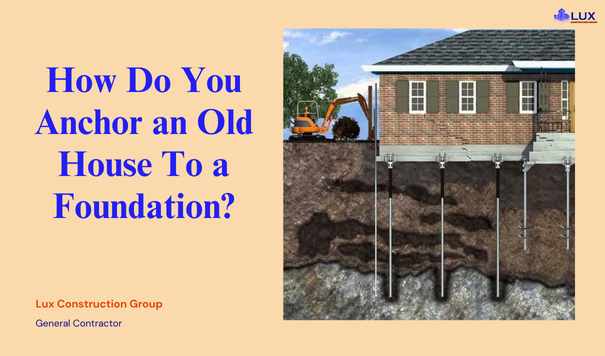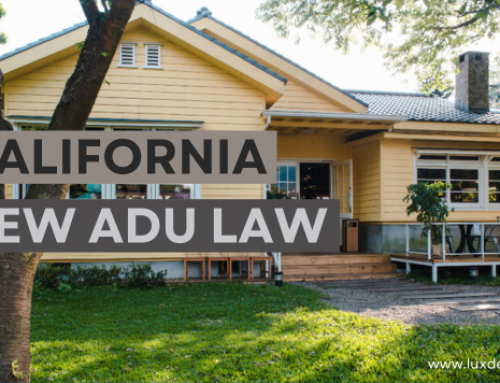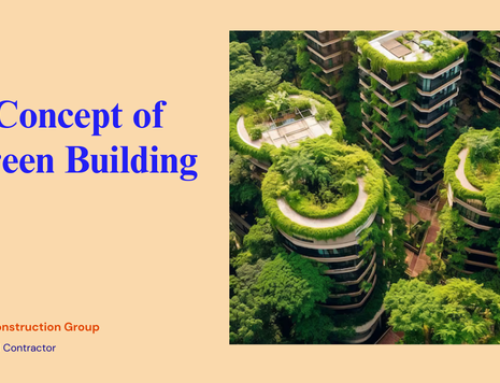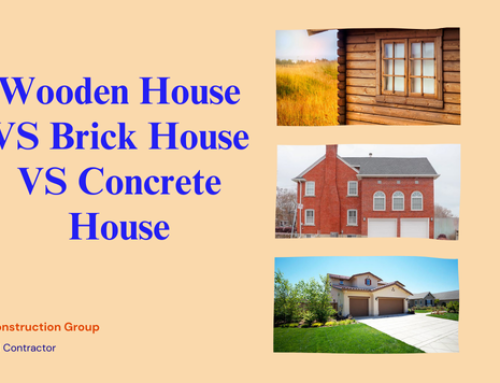Living in Los Angeles, we know that earthquakes are a fact of life in this seismically active region. With so many old homes built decades ago before modern seismic codes, properly anchoring them to strengthen their foundations is crucial for safety and stability. This article provides important guidance on the best practices for securely anchoring an older home in LA to its foundation using anchor bolts, epoxy anchors, straps, and footings.
With the right earthquake retrofitting approach for your vintage LA house, you can brace it to withstand intense ground shaking by structurally coupling it to its foundation.
Implementing these seismic upgrade tips aligns perfectly with Los Angeles’ high earthquake risk. They will help optimize your old home’s safety as the seismic waves roll through. If securing your home’s structure to survive earthquakes is a priority for you, read on or call our structural engineering contractor.
Contents
- Why Secure an Old House to Its Foundation?
- Signs That Your Foundation Needs Repair
- Horizontal Cracks and Stair-Step Cracks in Walls
- Newly Sticking Windows and Doors
- Gaps Around Garage Doors
- Nail Pops
- Different Methods of Foundation Stabilization
- Steel Piers
- Concrete Piers
- Helical Piers
- Segmented Piers
- Mudjacking
- Spot Piers
- High-Density Polyurethane Foam
- Anchoring an Old House: What to Consider
- Material Compatibility and Corrosion Resistance
- Building Code Requirements and Permits
- Structural Integrity and Load Distribution
- Cost Estimation and Budgeting
- Hire Licensed and Qualified Basement Construction Contractor
- Conclusion
Why Secure an Old House to Its Foundation?
When discussing the preservation and safety of older homes, one crucial aspect often overlooked is anchoring the house to its foundation. This process is not just a routine maintenance task; it’s a vital step in ensuring the longevity and stability of a home that has stood the test of time.
Potential Issues with Aging Foundations
- Structural Integrity: Over time, the foundation of a house can undergo significant wear and tear. This deterioration can lead to a compromise in the house’s structural integrity. Addressing this issue promptly can prevent more severe problems like uneven settling or even collapse.
- Environmental Factors: Soil erosion, moisture changes, and seismic activity can adversely affect an old foundation. These factors can cause shifts and cracks in the foundation. Timely intervention is necessary to mitigate these risks.
- Safety Concerns: An unanchored house is more vulnerable to natural disasters, especially in earthquake-prone areas. Ensuring that a house is properly anchored can significantly enhance its safety and resilience.
Importance of Professional Consultation
- Expert Assessment: Professionals in foundation repair and house anchoring possess the necessary expertise to accurately assess an old foundation’s condition. They can identify specific issues and recommend the best course of action.
- Customized Solutions: Every old house is unique, and so are its foundation needs. Professionals can provide tailored solutions that best fit the specific requirements of your house.
- Ensuring Compliance and Safety: Adhering to local building codes and safety standards is crucial. Professional consultants are well-versed in these regulations, ensuring that any anchoring work is compliant and safe.
Signs That Your Foundation Needs Repair
Living in Los Angeles, a region known for its seismic activities, homeowners often face unique challenges in maintaining the structural integrity of their homes, particularly older structures. One critical aspect of ensuring safety and durability is properly anchoring the house to its foundation.
This process becomes even more crucial when signs of foundation distress appear, often exacerbated by the area’s earthquake risk.
-
Horizontal Cracks and Stair-Step Cracks in Walls
These are telltale signs of foundation issues. In seismic zones like Los Angeles, these cracks may indicate that the ground movement has affected the stability of your foundation. Horizontal cracks often signify that the foundation is experiencing uneven pressure, while stair-step cracks, especially in brick or concrete block walls, suggest movement in the foundation.
-
Newly Sticking Windows and Doors
If doors and windows that used to open and close smoothly are now sticking or jamming, it could be a sign that your foundation has shifted. This shift can warp the frames of windows and doors, making them difficult to operate.
-
Gaps Around Garage Doors
Similar to sticking windows and doors, gaps appearing around garage doors can indicate foundation shifting. These gaps occur when the foundation moves, and the structure of the house no longer aligns as it originally did.
-
Nail Pops
While less obvious than cracks or gaps, nail pops can also signal foundation issues. These occur when the drywall pushes the nails out slightly, creating a bulge or pop in your walls or ceilings. This can happen when the foundation shifts, causing the frame of the house to move and putting stress on the walls and ceilings.
Different Methods of Foundation Stabilization
Homeowners in LA are acutely aware of the seismic activities that threaten the stability of their homes. Ensuring that an old house is securely anchored to its foundation is not just a matter of maintenance, but a crucial safety concern.
Here, we explore various methods of foundation stabilization, tailored specifically for the unique geological and climatic conditions of the Los Angeles area.
-
Steel Piers
Steel piers are a highly effective solution for foundation stabilization in earthquake-prone areas like Los Angeles. These piers are driven deep into the ground until they reach stable, load-bearing soil layers.
This depth ensures that the foundation is anchored securely, providing resistance against seismic shifts. Steel piers are particularly beneficial for older homes that may not have been originally designed with earthquake resilience in mind. Their installation causes minimal disturbance to the property, and they offer a long-term solution to foundation instability.
-
Concrete Piers
Concrete piers are a traditional and time-tested method of foundation stabilization. They are known for their exceptional durability and ability to bear heavy loads. In the Los Angeles area, where soil conditions can be variable and unpredictable, concrete piers provide a stable and reliable foundation support system.
By evenly distributing the weight of the house, these piers help prevent uneven settling and cracking of the foundation, common issues in older buildings. Their installation, though more invasive than some other methods, offers a permanent solution to foundation instability.
-
Helical Piers
Helical piers are an innovative foundation stabilization method, particularly suited to the diverse soil types found in Los Angeles. These piers are screwed into the ground, providing a secure anchoring system that adapts to different soil conditions.
They are especially useful for lighter structures and in areas where traditional piers might not be feasible. The installation of helical piers is less disruptive to the surrounding landscape, making them a preferred choice for properties where preserving the yard or garden is a priority. Their versatility and minimal impact make them an excellent choice for Los Angeles homeowners.
-
Segmented Piers
Segmented piers offer a practical and cost-effective solution for foundation stabilization, particularly in areas with limited access. In the dense urban environment of Los Angeles, where space can be a constraint, segmented piers provide an adaptable and efficient stabilization method.
They are installed in segments, allowing for greater flexibility in tight spaces. Despite their segmented construction, they provide sufficient support to maintain the stability of older homes, safeguarding them against the effects of seismic activity.
-
Mudjacking
Mudjacking is a process where a cement-based mixture is pumped underneath the foundation to fill voids caused by soil erosion or settling. In Los Angeles, where soil erosion can be a significant issue, mudjacking offers an effective way to stabilize the foundation.
This method not only lifts the foundation back to its original position but also helps in leveling uneven floors, a common problem in older houses. Mudjacking is a less invasive and more cost-effective alternative to complete foundation replacement.
-
Spot Piers
Spot piers are designed to provide support to specific areas of a foundation that are experiencing problems. In older Los Angeles homes, where certain sections of the foundation may be more prone to damage due to soil conditions or previous seismic activity, spot piers offer a targeted approach to stabilization.
They are smaller in scale compared to other pier types and are typically used in conjunction with other foundation repair methods to ensure comprehensive stability.
-
High-Density Polyurethane Foam
High-density polyurethane foam injection is a modern technique for foundation stabilization. This method involves injecting a foam material into the ground beneath the foundation. The foam expands, filling any voids and lifting the foundation to its correct level.
This method is particularly useful in Los Angeles for its quick application and minimal disruption. It’s an ideal solution for urgent stabilization needs, especially in the wake of seismic events, providing a fast and effective way to address foundation issues.
Anchoring an Old House: What to Consider
Anchoring an old house to its foundation is not just a renovation task but a necessity for safety. This process, while complex, is essential in safeguarding your home against earthquake damage.
Understanding the following considerations is crucial for any homeowner embarking on this journey.
-
Material Compatibility and Corrosion Resistance
The selection of materials for anchoring is pivotal. In Los Angeles, where environmental factors like moisture and salt air can lead to rapid deterioration, choosing corrosion-resistant materials like stainless or galvanized steel is vital.
These materials must not only be strong enough to withstand seismic forces but also compatible with the existing structure of your house, including its age and architectural style. Consulting with a structural engineer can provide insights into the best materials that blend strength, compatibility, and longevity.
-
Building Code Requirements and Permits
Los Angeles has stringent building codes, especially concerning seismic retrofitting. These codes are designed to ensure that any foundation anchoring adheres to the latest safety standards. Navigating these regulations can be complex, and obtaining the right permits is a critical step.
Failure to comply can lead to legal issues and, more importantly, compromise the safety of your home. A licensed contractor familiar with Los Angeles building codes can be invaluable in this process, ensuring that your anchoring project meets all legal requirements.
-
Structural Integrity and Load Distribution
Before anchoring, a thorough evaluation of your house’s structural integrity is essential. This assessment focuses on how well the current structure can distribute and withstand seismic forces.
In older homes, certain areas may be more vulnerable to damage. The goal is to design an anchoring system that evenly distributes seismic forces throughout the structure, minimizing the risk of concentrated stress and damage. This often requires a customized approach, tailored to the specific architectural features and existing condition of your home.
-
Cost Estimation and Budgeting
The cost of anchoring an old house in Los Angeles can vary significantly based on several factors, including the size of the house, the materials used, and the complexity of the installation.
It’s important to get detailed estimates from experienced contractors who have worked on similar projects in the area. Additionally, setting aside a contingency fund for unforeseen expenses can prevent financial strain. Remember, while cost is an important factor, it should not compromise the quality and safety of the anchoring process.
Hire Licensed and Qualified Basement Construction Contractor
Los Angeles’ susceptibility to earthquakes is largely due to its proximity to major fault lines, including the infamous San Andreas Fault. This geological setting demands construction practices that go beyond the standard, prioritizing safety and durability. For basement construction, this means adhering to stringent building codes designed specifically for seismic resilience.
Licensed contractors in Los Angeles of LUX Construction Group are not just builders; they are professionals in building a safe home structure. Their training encompasses specialized techniques in earthquake-resistant construction, ensuring that your home is more than just a space – it’s a safe haven during seismic events. These professionals are well-versed in the latest building codes and bring a level of expertise that is crucial for your home’s integrity.
We have verified their licenses, insurance, and track record. Arrange consultations today to discuss how we plan to address the unique seismic challenges in Los Angeles, tailoring our approach to your specific needs.
Our competent contractors will use a variety of techniques and materials to fortify your home against earthquakes. This includes the installation of shear walls, anchor bolts, and flexible piping systems, all designed to provide additional stability and flexibility during seismic activity. Each home in Los Angeles has its unique requirements, and our skilled contractors know how to customize these safety measures to your home’s specific location and structure.
Conclusion
For homeowners in Los Angeles, the decision to entrust your foundation construction to LUX Construction Group is a step towards ensuring the longevity and safety of your property. Our expertise in building earthquake-resistant structures gives you the confidence that your home is prepared to face the seismic challenges unique to the region.
Choosing LUX Construction Group means partnering with a team that values your safety and investment. Our licensed and qualified professionals are not only adept at navigating the stringent building codes of Los Angeles, CA but also excel in customizing solutions that cater to the specific needs of your home. Whether it’s incorporating advanced seismic retrofitting techniques or using innovative materials, LUX Construction Group is at the forefront of creating basements that are not just spaces, but strongholds of safety and stability.
With LUX Construction Group, you’re not just building a basement; you’re fortifying the foundation of your home for generations to come.






